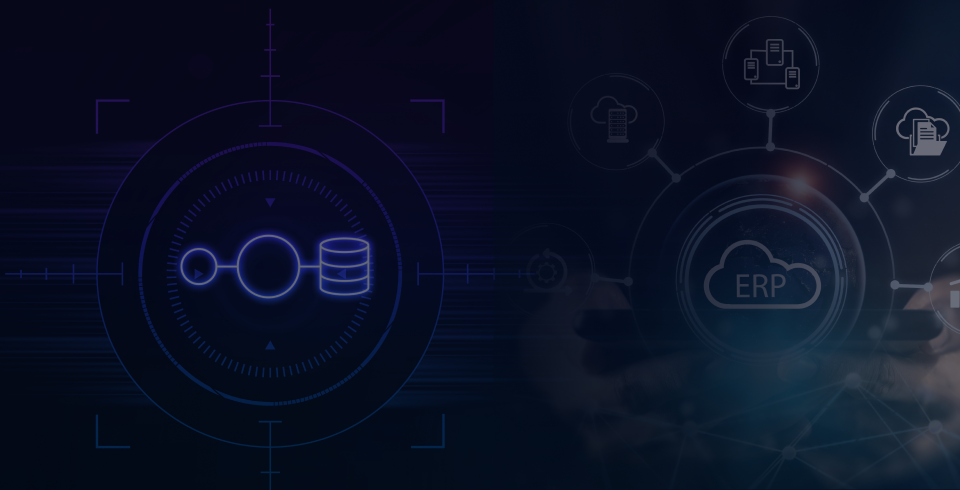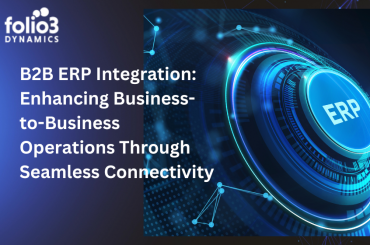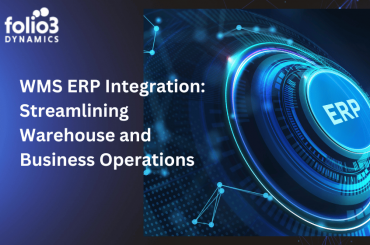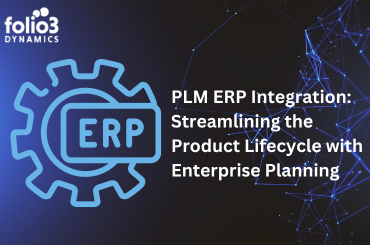Table of Contents
ERP solutions have evolved and broadened their scope to support the majority of business operations, from front-office activities such as sales force automation (SFA), marketing automation, and e-commerce to back-end operations such as accounting, human resources (HR), procurement, and manufacturing. Businesses rely on ERP to cut costs by eliminating redundant procedures and automating tiresome tasks, as well as to provide staff with access to critical data so they can make better decisions faster.
ERP systems are always changing to accept new technologies and cover a broader range of functions as organizations rely on them to run their businesses. In this essay, we’ll look at eight major trends to monitor in 2024 and beyond.
Important Points
- Machine learning, a subtype of artificial intelligence (AI), assists in personalizing client interactions, providing new insights, and improving business processes.
- ERP is integrating with other technologies such as social media and internet of things (IoT) devices to further automate, expand visibility, and improve customer experiences.
- In the aftermath of the coronavirus, businesses are increasingly relying on distributed workforces, making a remote work solution necessary.
1. Cloud ERP
Many firms formerly relied on on-premises ERP software and were unwilling to migrate critical business processes to the cloud, but this is rapidly changing. Businesses are embracing cloud ERP to benefit from easier deployment, lower costs, elasticity (the ability to only use the resources needed at any given time), new functionality, a reduced need for internal IT resources, and the ability to easily add users and functions to accommodate business growth.
The epidemic has highlighted the benefits of cloud ERP and has accelerated the shift away from on-premises software, in part because cloud-based apps allow employees to do activities from anywhere with an internet connection and are not limited to an office environment. In order to save money and better serve their remote workforces, numerous CFOs who are trying to cut costs in the face of economic uncertainty are boosting their investment in cloud ERP. In 2020, 20% of finance professionals polled stated they expected to spend more on cloud ERP systems.
2. Two-Tier ERP
Many firms have sought to adopt a single ERP system for the corporate office, all regional offices, and all subsidiaries in the past. However, that technique was usually costly and difficult to implement because subsidiaries frequently had unique needs, did not require the full power of the corporate system, and struggled with the one-size-fits-all strategy.
Because of this, two-tier ERP is one of the top ERP trends for 2021. Businesses can leverage their existing ERP system investments at the corporate level (tier 1) with two-tier ERP, while subsidiaries and divisions use a separate ERP solution (tier 2), which is usually cloud-based. While smaller corporate divisions use systems tailored to their own requirements, larger firms may still rely on their principal ERP system for financials and other critical operations. The effectiveness of this technique is also contingent on the ability of the tiers to share data; some tier 2 cloud solutions include ERP integration capabilities.
This method offers several advantages. It is often less expensive than modifying the corporate ERP system to work for the entire organization. A tier 2 solution may be easier to implement and give subsidiaries more flexibility to respond to changing business conditions. The two-tiered model may also be more appropriate for rapidly growing businesses. According to Gartner, large businesses should “examine if a two-tier ERP approach will give more commercial advantage than a single-tier one, particularly by updating tiny, potentially fast expanding business units.”
3. Digital Transformation
“Digital transformation” refers to the incorporation of digital erp technology into all company activities in order to improve day-to-day operations. This method can frequently boost revenue and competitiveness while increasing employee productivity, improving customer service, and improving communication.
Because an ERP suite frequently influences the majority of a company’s activities, it makes sense to begin there to facilitate this transition. According to Accenture’s 2020 ERP Trends research, three-quarters of UK organizations are using cloud ERP as a gateway to modernization. The use of AI and advanced analytics, as well as the integration of ERP with IoT devices, are a few examples of innovations that can be considered part of this digital transformation.
4. ERP Integration with Other Technology
Modern ERP is a crucial part of a company’s digital transformation, but it is simply one component of a bigger technology investment. Businesses are mixing their business software with other emerging erp technologies, such as IoT, to improve essential operations. Retailers, for example, employ warehouse management systems to track the flow of things within the warehouse, gathering data from mobile scanners and intelligent conveyors. Some companies integrate ERP and eCommerce to improve the procedures related to online orders. This integration automatically updates inventory levels, registers payments, and begins order fulfillment.
ERP and social media will also become more intertwined in the coming year. By collecting all of their customers’ and prospects’ social media activity in one place, businesses may acquire a better understanding of their audience and improve their digital marketing methods and customer experience. By combining data from social media interactions with sales order history and customer contact, businesses may learn more about the entire sales process and experiment with new ways to target and sell.
5. Personalization
Historically, it was difficult to adapt ERP solutions with complex programming languages to the specific needs of each organization. Businesses, on the other hand, can now benefit from cloud ERP solutions, also known as “low-code” platforms because they are designed for easier implementation. A growing variety of ERP solutions are being created to address the needs of diverse industries.
Companies want ERP systems that can provide capabilities such as highly customized dashboards to fulfill their needs as they focus on giving more personalized, relevant experiences to customers. One such trend is the rise of AI-based conversational and assisted user interfaces such as chatbots, which can read user voice or text input and answer queries using customer and order data stored in the ERP.
6. AI-Powered Enhancements and Insights
Artificial intelligence and machine learning capabilities are being integrated into ERP systems to meet the growing need for personalization and to improve a wide range of corporate operations. Previously, some ERP systems allowed for the installation of AI capability; however, many manufacturers now supply ERP software with these characteristics pre-built.
AI can provide significant benefits to businesses, including:
Additional information: As organizations collect more operational and customer data than ever before, they rely on AI to deliver relevant business intelligence. AI algorithms scan massive volumes of unstructured data, recognizing patterns and anticipating trends that would be impossible to identify with manual number crunching alone.
Improved Procedures: Many procedures benefit from automation and enhancement as a result of AI. Consider a manufacturer that implements just-in-time inventory management, which aims to provide components as quickly as possible to reduce inventory costs. AI, specifically machine learning, can optimize labor and supply delivery schedules to increase output while decreasing costs. According to an IFS poll conducted in 2019, 36% of manufacturers planned to utilize AI for production scheduling and customer relationship management, while 40% planned to use it for inventory planning and logistics.
7. Statistical Forecasting
The increased desire of organizations to mine their operational and customer data for new, relevant insights that will boost their top and bottom lines is reflected in the demand for AI-infused ERP.
While studying ERP data to demonstrate past events has always been possible, an emphasis in 2021 and beyond will be on using predictive analytics to identify and address what is likely to happen in the future. For example, software with machine learning capabilities can sift through data on machine repairs kept by a maintenance company to estimate when problems are most likely to occur. The company’s maintenance routines can be tailored to replace or service parts before they fail.
8. Mobile ERP
ERP vendors have long offered mobile capability, and mobile apps are becoming more widespread. ERP solutions are evolving to provide on-the-go access to important company data in order to enable employees to conduct both back-end and front-end activities wherever they are, from the warehouse floor to a retail checkout terminal to an airport. Mobile ERP can also enhance collaboration for geographically dispersed workforces operating across multiple time zones.
Users who are not in front of a computer can execute activities by using mobile ERP apps with an easy-to-use user interface. Employees can use their cell phones to perform tasks such as expense reporting, call logging, and time monitoring, as well as to monitor the status of critical workflows or approvals. Mobile ERP provides real-time data and insights, as well as general benefits such as always-on remote access, increased agility, and increased productivity.





